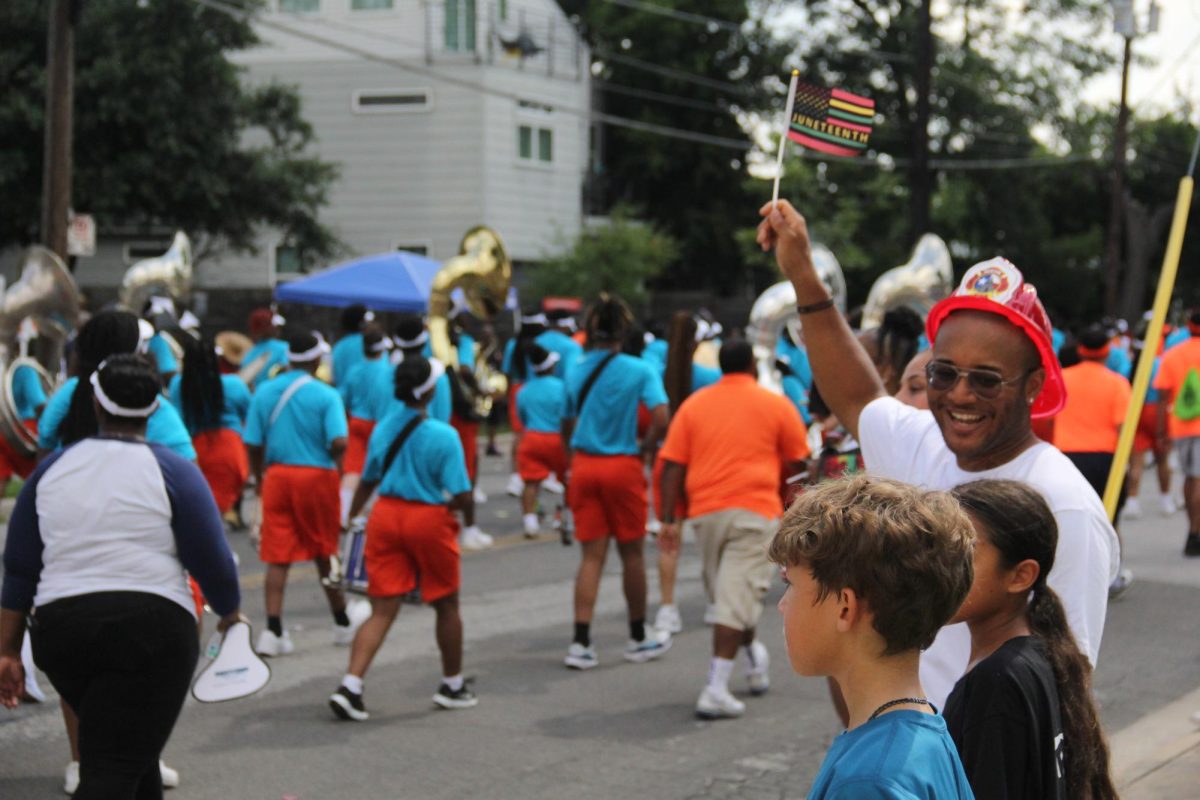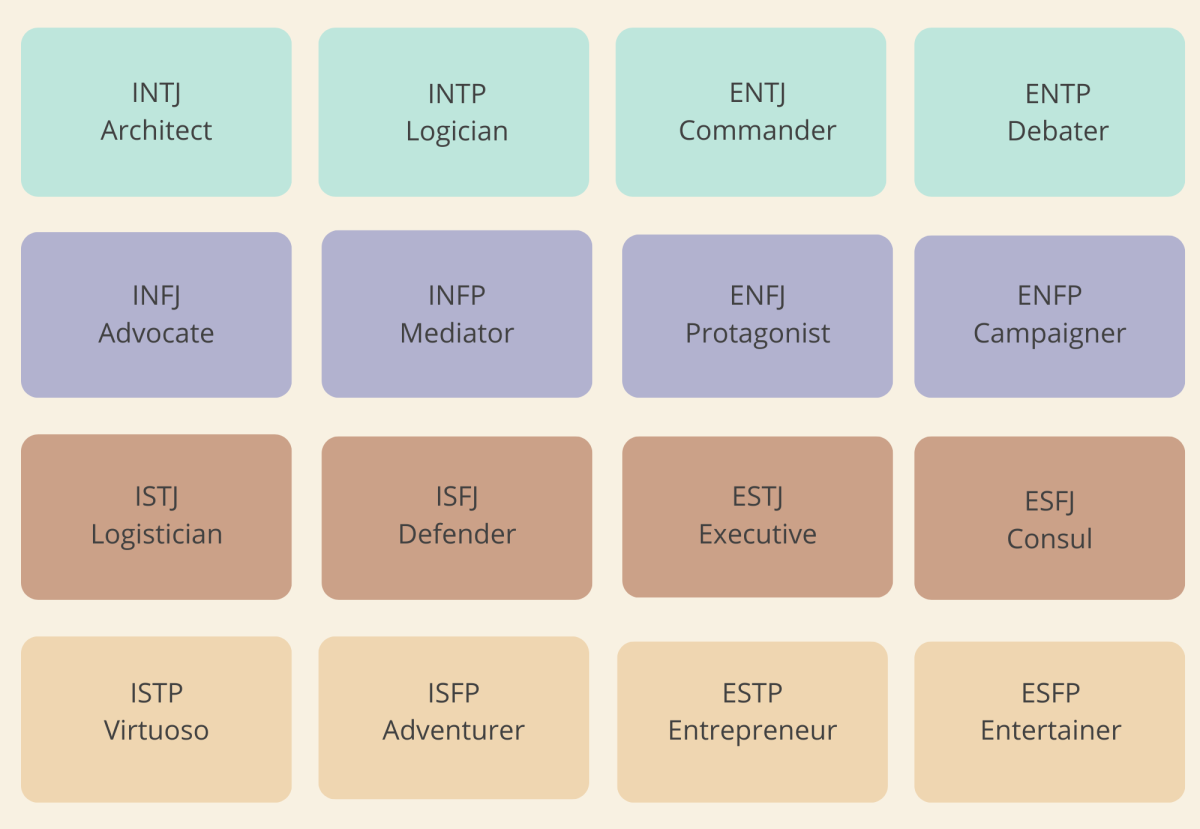
Senior Elena Ulack didn’t know that taking a six-question quiz in fifth grade would turn into a passion of hers later in life. That day in elementary school, the school counselor was supposed to come in and do a personality-test activity with the class. As the counselor read out questions, the students would stand up if they agreed with the statement. Ulack found herself entranced by the mini-test. This introduction to personality tests would progress for Ulack into an interest that she continues to develop to this day.
“When I first learned about [the MBTI test] I was in fifth grade,” Ulack said. “ I got really into it and it kind of all spiraled from there.”
I really value understanding other people. I think that having sort of a guideline can really help you connect and understand others.
— senior Elena Ulack
Personality tests have been around for decades. Two of the most popular of these personality tests are the Myers-Briggs and Enneagram tests. The Myers-Briggs Type Indicator, or MBTI, is a psychological test that asks how someone might perceive the world, make decisions and interact with other people. Depending on the participant’s answers, they are given one of 16 different personalities. While some people don’t believe the test has outstanding accuracy, others believe it can actually provide interesting and enlightening information about someone’s character.
The test asks questions such as, “Do you prefer to completely finish one project before starting another or are you more inclined to follow your head than your heart?” The participant is asked how much they agree or disagree with the given statement.
After answering 93 questions, the test-taker is presented with their personality type. Each type has a four-letter combination in which each letter represents a different aspect of their personality. They are also given a name that goes along with their four-letter personality type. Examples of these names include “the Architect,” “the Logician,” “the Mediator” and more.
The beginning of the four-letter combination is either an I or an E, which stand for introverted and extroverted, respectively. The next letter is either an N or an S. These represent intuition and sensing, or whether the participant enjoys processing facts or deeper meanings. The second to last letter is either a T or an F. These letters represent if the test-taker makes decisions based on thinking or feeling. The final letter of the four-letter combination is either a J or a P. These show if the participant interacts with others and the outside world in a judging or perceiving way.
Many students find excitement in taking these personality tests and learning about different aspects of themselves. Ulack is one student who has taken an interest in the MBTI and other similar personality tests.
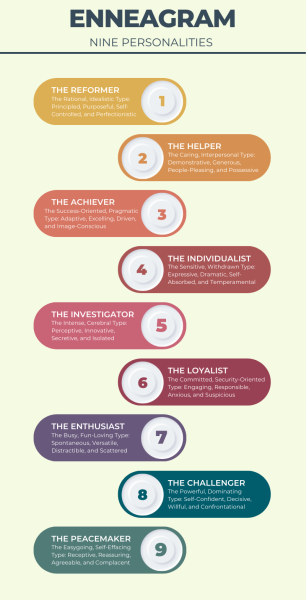
“I really value understanding other people,” Ulack said. “I think that having sort of a guideline can really help you connect and understand others.”
The MBTI isn’t the only popular personality test. The Enneagram personality test is another common assessment that groups participants into nine different categories. The Enneagram test groups the nine personality types into three groups called “centers.” These are the thinking, feeling and instinctive centers.
“I’m a big Enneagram person,” Ulack said. “I think that Myers-Briggs doesn’t do as good of a job with making it as specific to each person. I think [Enneagram] provides a little bit more variety for each personality.”
Opinions vary on which of these two tests is more accurate in defining someone’s personality. Both, however, tell separate, specific information about someone’s character as a whole. While the Myers-Briggs test gives insight into participants’ interior characteristics, it also shows how they interact with others. The Enneagram test mainly focuses on someone’s strengths, weaknesses, goals and other attributes.
“Myers-Briggs focuses on how you solve things,” senior Olive Greene said. “Enneagram has a grittier side, where it focuses more on not necessarily your flaws but areas where you need to improve.”
Greene is another McCallum student who has gained an interest in these personality tests over the years.
“I got into it when I was in sixth grade, and I read a whole book on it,” Greene said.
Although many people enjoy taking these tests and believe they are accurate to their personalities, many don’t trust the accuracy and believe that grouping people into specific categories can cause problems. One such issue could be receiving inaccurate results, leading to participants’ disappointment.
Having these very specific categories of personality can be troubling because nobody fits into any kind of box. I think they can be helpful, but they should never be the end of all of the truth of who you are.
— psychology teacher Catherine O'Neal
“Having these very specific categories of personality can be troubling because nobody fits into any kind of box,” Psychology teacher Catherine O’Neal said. “I think they can be helpful, but they should never be the end of all of the truth of who you are.”
Greene also agrees that it’s difficult to classify everyone into only 16 different categories.
“Not everybody can be put into 16 different labels,” Greene said. “It’s not one size fits all.”
One reason that Greene and Ulack are drawn to these personality tests is that they believe they can give them more insight into the way other people live their lives.
“I think it helps you be more empathetic to other people and to yourself,” Ulack said. “It’s important to have self-awareness and to know a little bit more about who you are and how you act in the world.”
Personality tests like the MBTI and Enneagram help people understand themselves and the people in the world around them. Whether the accuracy of these tests is precise or not, learning more about aspects of one’s personality can provide comfort for people trying to understand how they function, and what different aspects of themselves mean.
“Anything that exposes more of an understanding of who you are and why you behave the way you do is helpful for the condition of living,” O’Neal said.



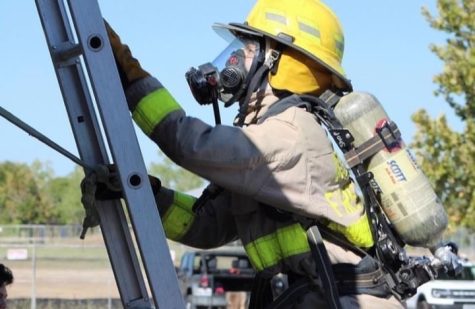



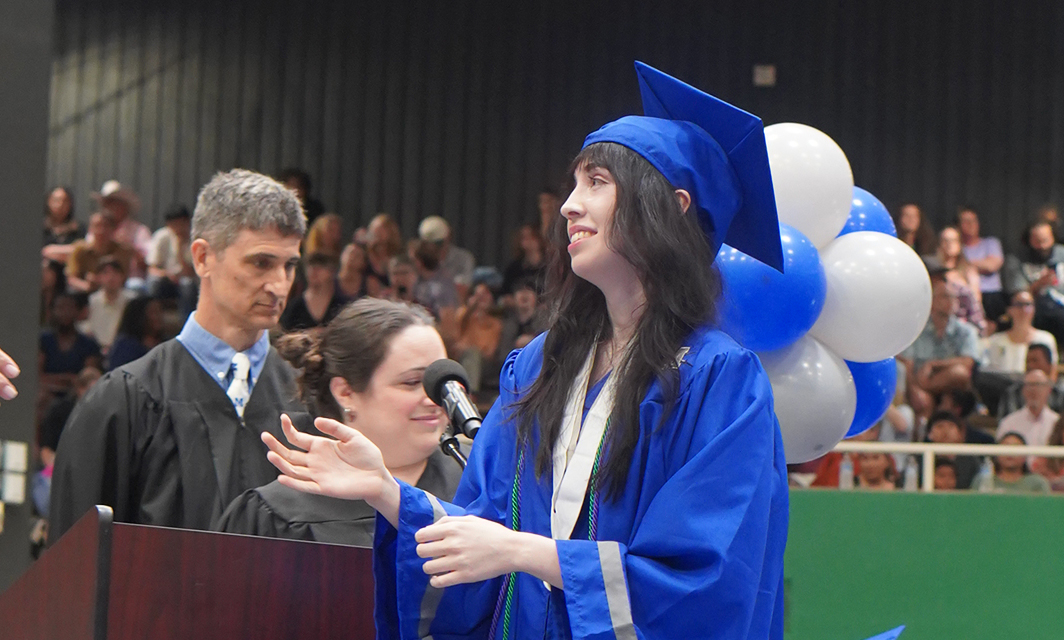

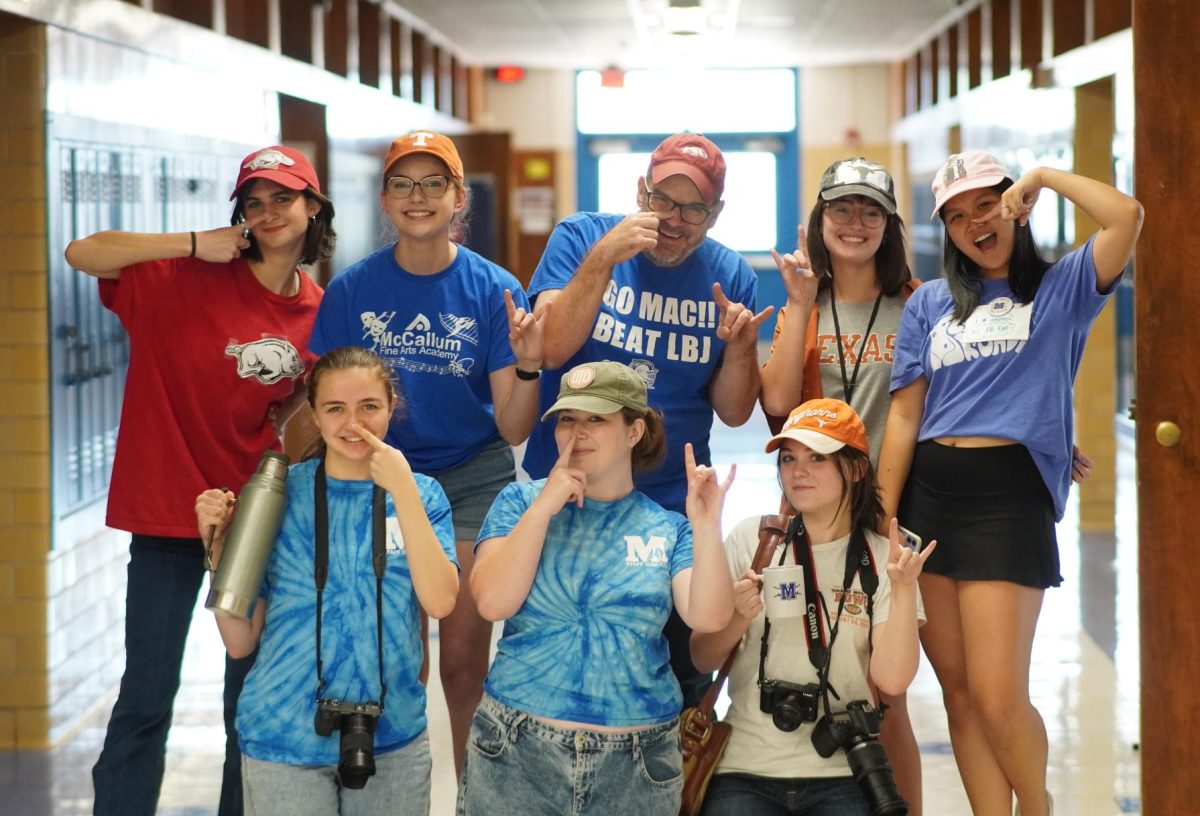

![This is Paul Pews high school graduation photo. The 2023-2024 school year marked his 34th year of teaching. He began his career in Washington, then came to McCallum where he has taught for the past 17. At heart though, he’s really a musician. One that grew up in many different places, including Chicago and California, who took interest in teaching from a young age. His high school choir experience, along with some international singing in college, persuaded him that teaching was his path. He knew he wanted to be able to help create works of art in the fine arts department as well, so he joined McCallum. He’s worked on many of the musicals over the years, even before Joshua Denning, the former theatre director of the fine arts program arrived. Before him was a different director: Tatum.
“I was the music director for all the musicals,” Pew said. “[Mr. Tatum and I] worked very hard, and I just got to the point where I was satisfied with it.” Although he may not be as prominent of a member in the musical theatre community at McCallum anymore, he still plays piano. “I still do a lot of music down at the Music end of the building,” Pew said. Photo courtesy of Paul Pew.](https://macshieldonline.com/wp-content/uploads/2024/07/Paul-Pew-1974-888x1200.jpg)
